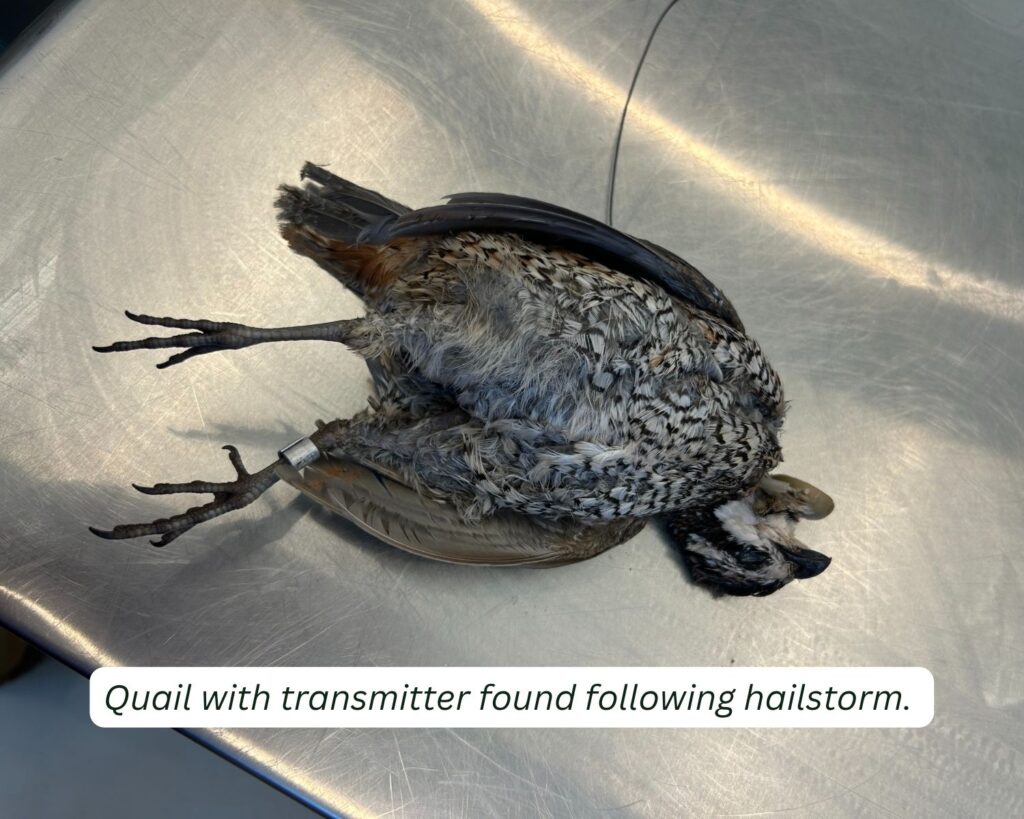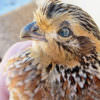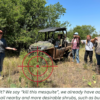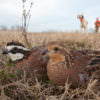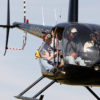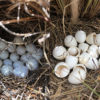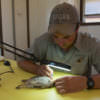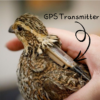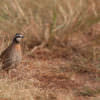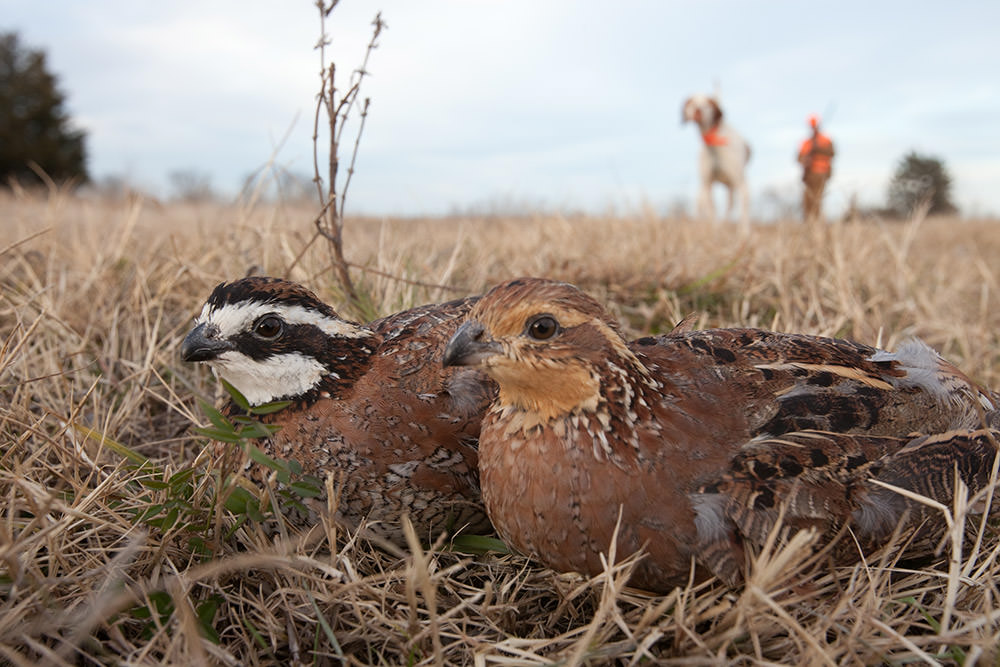
Each year across the Rolling Plains, quail populations face a range of environmental challenges—but one of the most destructive and often overlooked are hailstorms. While spring and summer rains are always welcomed for their role in rejuvenating habitat, hailstorms can bring localized devastation to quail, particularly during their most vulnerable reproductive and brooding periods.
When storms strike during the day, quail may be foraging in open areas, sometimes without adequate overhead cover. Even though they may attempt to flee or hunker down in protective vegetation, their exposure can still result in lethal injuries from hailstones—especially those over an inch in diameter. Chicks with their reduced mobility rely on adults for warmth and shelter and are especially at risk of being killed outright or dying from exposure in the aftermath of a hailstorm.
The risks can be even greater when hailstorms strike at night. Quail roost on the ground in grasses and weeds without much overhead woody cover. This strategy allows them to flush easily if disturbed while roosting, but also leaves them vulnerable to being pummeled by hailstones. Nesting hens that remain on the nest are particularly susceptible, often found dead after shielding their eggs. Their fidelity to the nest and inability to seek cover at night may result in high mortality rates during nocturnal hail events.
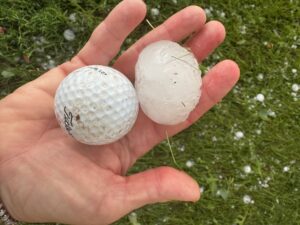 The Rolling Plains Quail Research Ranch experienced such an event at ~11:30 pm on April 4th. Hailstones the size of ping-pong balls were recorded on the Research Ranch. At the time, 72 quail were being monitored with VHF radio collars. The following morning 8 collared quail were found dead, presumably bludgeoned by the nighttime hail storm (i.e, dead quail were not dismembered by a predation event). Accordingly, this single event killed 11% of our radio-collared birds.
The Rolling Plains Quail Research Ranch experienced such an event at ~11:30 pm on April 4th. Hailstones the size of ping-pong balls were recorded on the Research Ranch. At the time, 72 quail were being monitored with VHF radio collars. The following morning 8 collared quail were found dead, presumably bludgeoned by the nighttime hail storm (i.e, dead quail were not dismembered by a predation event). Accordingly, this single event killed 11% of our radio-collared birds.
Did our population experience a similar fate ranch-wide? In the month prior, extensive trapping indicated that the Research Ranch’s quail population was approximately 1,788 birds. Extrapolation suggests that approximately 196 quail (1788 x .11) in total may have been killed by this storm. While it’s impossible to confirm this assertion, no dead unmarked quail were happened upon in the days following the storm, predators likely consumed any dead quail in a matter of days. Regardless, it seems likely dozens (maybe hundreds) of quail perished during this storm on the Research Ranch.
Beyond the immediate trauma to adult birds and broods, hailstorms can cause substantial destruction to nests. Eggs may be directly crushed or damaged, or rendered nonviable due to exposure and chilling. Hens that survive may attempt to re-nest, but the production of a second clutch demands significant energy reserves.
Although hailstorms are an uncontrollable force of nature, there are strategies that land managers can adopt to mitigate their impacts. Maintaining a diverse range of vegetation structures across the landscape increases the chances that quail will find effective cover during sudden weather events. Pricklypear cactus may provide functional “storm shelters.” Promoting habitat mosaics with varying grazing intensities and preserving pockets of desirable shrubs and pricklypear may offer refuge during storms and allow for quicker recovery afterward. – by Dr. Dan Foley
